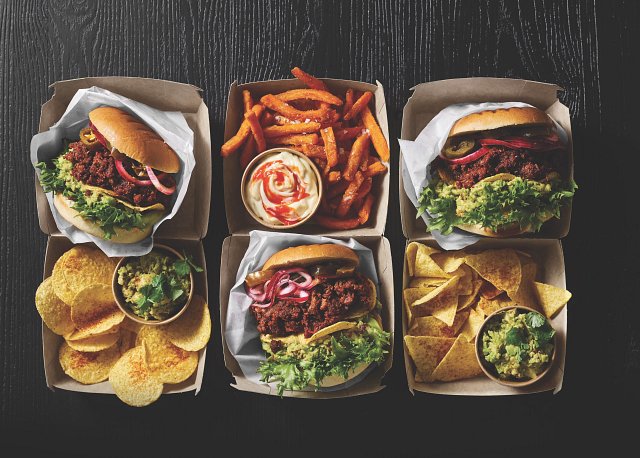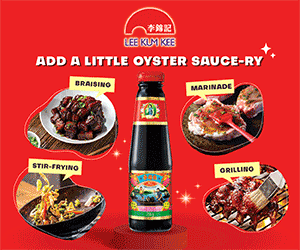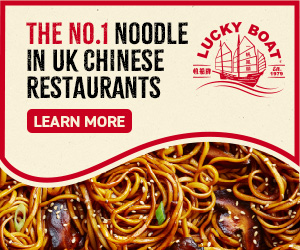Feature: Stay rooted

Veganuary is almost upon us, presenting a unique opportunity for operators to perfect their plant-based offerings and capitalise on a culinary category that’s fast becoming mainstream
There’s arguably no food trend as impactful as the growing plant-based movement. Operators have proved eager to embrace veganism in their offerings – and for good reason, too. Those committed to expanding their plant-based recipes don’t just cater to the 1.6 million
vegan-identifying diners across the country, but also 7.2 million vegetarian, flexitarian and health-conscious Brits, as well as those with allergies to animal-based products such as dairy or eggs.
Demand is so pervasive that separate vegan menus seem increasingly unnecessary and outdated; according to research by Kantar, more than 90% of meals categorised as vegan or plant-based are actually eaten by non-vegan identifying diners. In fact, a study by the London School of Economics highlights the importance of menu placement in this category; experts found that more than half (56%) of meat-eaters are less likely to order a plant-based dish listed in a separate ‘vegetarian’ or ‘vegan’ section over the main menu.
The alternative explosion
Back in June, a report by global market research agency Spark confirmed that 2022 has seen the vegan movement accelerate. The study identified three key motivating factors for the surge, which is largely attributed to the growing flexitarian market: personal health, environmental concerns stemming from meat production and animal welfare issues.
“Creating separate menus might be great for vegans but actually hides these options away from people most likely to order them,” says David Pannell, co-founder of global community and consultancy Vegan Business Tribe (VBT). “There are customers that probably enter your venue not consciously thinking about vegan or plant-based options – they are just looking for great food.”
So, whether your business is small or large, casual or fine-dining, specialist or all-encompassing, it’s time to give your plant-based offering the care and attention it deserves.
“New product development (NPD) in plant-based and meat alternatives confirms consumer interest in a more mindful way of eating,” says Charlotte Perkins, trade marketing manager at Pan’Artisan. “The worldwide increase in demand for great-quality vegan, vegetarian and free-from options has resulted in a host of NPD tailored to meet the expectations of catering operations, however big or small, and satisfy consumer requirements.”
Demand fuels supply, which explains the monumental rise of meat alternative products on the market. Keen to be responsible consumers, more and more people are looking for alternative protein products to take centre stage in traditionally meat-focused dishes, without compromising on taste.
As Andy Shovel, co-founder of plant-based company THIS, explains: “Consumers are becoming more discerning when it comes to vegan food. They’re looking for an experience even closer to meat – something that takes it up a notch in terms of hyper-realism.”
Rachel Schoosmith, marketing manager at Creative Foods, agrees, adding: “With improved flavour and textures across many different meat alternatives, and options that are both more convenient and easier to prepare, the meat-free category is engaging more consumers, more often.”
For chefs using faux-meat and non-meat proteins in dishes, remember that the brand story is key for creating differentiation on menus. “It reflects well on the caterer if they are using brands that go the extra mile when considering their environmental footprint, or how they source their base ingredients,” Rob Owen, executive development chef at Creed Foodservice, explains. “In the next year or so, we expect to see lots of suppliers and producers start to replicate not only the taste and texture of meat products, but also their look more closely, too,” adds Owen. “For example, meat-free brands are beginning to use sugar cane ‘bones’ to mimic things like chicken wings and beef ribs. This is exciting for the restaurant sector in particular, where so much focus is on dish appearance.”
Jordan Sclare, executive head chef at Japanese-Peruvian fusion restaurant group Chotto Matte, recognises just how far the meat alternative market has progressed in the last year alone. “Redefine Meat launched its new vegan meat product in the UK this year and collaborated with Chotto Matte to create an amazing vegan gyoza with miso vegetables, yuzu sweet potato purée and red pepper ponzu,” says the chef. “At Chotto, I spend a lot of time ensuring we have an on-brand vegan tasting menu, alongside some additional dishes, so there’s plenty of vegan choices throughout our cooking stations, using our tried, tested and loved techniques.”
Ingredients of plant-based dishes can be more cost-effective, too – a positive for restaurateurs facing spiralling business costs. “Vegan mince, for example, can be significantly cheaper than standard beef mince and provides around 20% extra yield, so it’s a great meat swap in many popular dishes such as lasagne, chilli or shepherd’s pie,” says Gordon Lauder, managing director of Central Foods. “As well as helping to take the pressure off budgets, offering meat-swap alternatives fits with the growing narrative around sustainability,” adds Lauder.
A trend set to move from this year into next is the consumer desire for ‘comforting carbs’. As Phil Thornborrow, foodservice director at Quorn Professionals, describes: “Diners are looking for generously overfilled open sandwiches and messy burgers, loaded with bold flavours and fillings, making for an appetising visual array of colours and textures, as well as tasting great.”

Pulled Oats BBQ Burger, Santa Maria
Speaking of burgers; swap the traditional beef patty with a meat-free substitute and you have yourself one of the most popular dishes in the UK today. A study commissioned by Lantmannen Unibake’s Americana brand in October revealed the gourmet burger to be the dish of choice for 22% of consumers seeking a vegan meal out-of-home. Opt for a premium vegan burger bun and you’ve made a bestseller, inclusive of all dietary requirements.
“When it comes to burgers, there’s a whole host of patties made from soy or pea protein designed to mimic the texture of their meat counterparts,” says Karen Heavey, brand manager at Kerrymaid. “Using a vegan cheese slice melted over the patty ensures customers on plant-based diets don’t miss out on this important element of the burger build.”
Seasonal colours
While many have been swept up by the meat substitute storm, others are sticking to the roots of the flourishing vegan category.
“Mock meats started off extremely popular at the start of 2022, but as the year went on, classic veggie alternatives like mushrooms, beans and jackfruit came into their own,” says Tom Styman-Heighton, development chef at Funnybones Foodservice.
En Root, an Indian-inspired, plant-based brand with three restaurants across south London, has been bringing ‘nutritional joy’ to diners in the city since 2016. Nish Modasia, co-founder of the concept, has witnessed the recent shift towards ‘cleaner’ or more natural plant-based options “that celebrate, in the En Root way, plant power vs mock meat alternatives,” he explains.
“Our aim is to fill a gap within the food industry, where dishes are aligned to support both mental and physical health – these are both key for our aim and intention of being the best versions of ourselves,” adds Modasia. “We cater in a natural, holistic way, where fruits, vegetables and pulses are prepared with flavour, thought and love. En Root brings culinary creations with a modern, south London swagger via our Indian-inspired roots.”

Nish and Harshil Modasia, cousins and co-founders of En-Root (Image: Lewis Khan)
The beauty of showcasing fruit and veg as the heroes of your plant-based dishes is the colour and creativity that can be drawn from such seasonal produce. From rich purple winter beets to fresh spring greens, to the kaleidoscope of summer berries and the sunset colours of autumn squash, the recipe inspiration you can take from these ingredients truly knows no bounds.
“I love the plant-based options I’ve created at Chotto Matte, such as the best-selling King Oyster Mushroom Tostadas (pulled mushroom, smoked aji panca chilli, guacamole, lime and coriander), which are targeted for everyone to enjoy,” says Sclare. “You can’t beat the colours and textures these ingredients bring to the menu. Creating seasonal dishes ensures you buy veg at the best quality and price, which is also a win.”
Worldly flavours
One of the greatest benefits of a connected and thus increasingly globalised world is our heightened exposure to international cuisines. The desire for new flavours and greater culinary choice has held strong – even at the height of the pandemic, when travel remained a challenge. Diners have never been more willing to experiment with taste, driving the trend towards fusion fare that blends elements of multiple cuisines.
“I would advise restaurateurs to deepen their foundation of vegan cooking knowledge, taking inspiration from historically plant-based communities,” says Modasia. “Examples are Ital food from the Caribbean, Hindu eating culture in India, Buddhist plate principles in Asia and fasting practice in East Africa. These cultures have a strong backlog of recipes and food ideologies that are worth learning about and given personal direction. Personal identity is key.”
Popular global flavours can be easily incorporated into your plant-based menu. As Nick Minchin, marketing manager UK&I at Santa Maria, suggests: “Pick one or two trending cuisines, so you have a core selection of herbs and spices that meet up-to-the-minute flavour profiles. Then select complementary carriers, vegetables and condiments for those cuisines, ideally with a long shelf-life to reduce food waste.”
Aromatic spices from India and the Middle East, for example, could be paired with flatbread and veg-based, regional side dishes, while pulled jackfruit infused with Mexican flavours could be piled into vegan tacos and served alongside a selection of fresh salsas and guacamole.
“We’re seeing huge diversification in consumer desire for punchy tastes right now, with flavour profiles ranging from hot and smoky chipotle to sticky Asian soy and sweet Caribbean,” Minchin adds. “Plant-based and vegan bases provide the perfect canvas; these flavours complement any proteins – plant-based or otherwise – making it easy for operators to spin a vegan dish simply by switching out proteins without compromising on flavours.”
Regardless of dietary requirements or preferences, diners today are after great taste with no exception. “The challenge is creating vegan dishes that are as tasty as non-vegan options,” Sclare explains. “I use a lot of dried products and smoked items to give plant-based dishes an extra kick.”
So many variables are at play when a person decides whether to consume meat or dairy on any given day – in the same way they might choose to treat themselves with a high level of sugar or fat when celebrating a special occasion. Just because they are opting out of one particular food group doesn’t mean they’re willing to sacrifice any element of quality or taste. Operators, be warned!
“Gone are the days when a salad or plant-based risotto would cut it,” says Marie-Emmanuelle Chessé, international development project manager at Tipiak. “Vegans expect to have a choice of plant-based options, and many other diners do too.”
There are plenty of brands that excel in this space, providing a plant-based menu that’s on par with, if not better than, options containing animal products. As Pannell of VBT explains: “Wagamama is a restaurant getting vegan and plant-based right, giving customers the option to order many of its signature serves as either plant-, meat- or dairy-based, which vastly increases the versatility of the menu.”
In the current climate, when pennies are stretched and eating out is more of a luxury than it has been in previous years, taste and quality considerations must be prioritised. It’s all about making free-from options every bit as familiar, indulgent and creative as their animal product-containing counterparts. “This can be tricky,” acknowledges Kevin Hughes, UK&I country manager for La Lorraine Bakery Group, which includes the Panesco brand. “Meeting standards for salt, sugar and fat intake is another consideration for operators. Protein and meat alternatives can have higher levels of these ingredients in them – operators need to be mindful of this.”
Consider your condiments
The last thing you want is your kitchen staff to sweat over a delicious plant-based meal, only for your vegan guest to then unknowingly slather it in a non-vegan sauce as soon as it hits the table. It might seem like a big shift, but there are actually heaps of benefits to solely providing vegan tableside products as a standard.
“Pizza Hut has ‘veganised’ the majority of its condiments and ancillaries, even to the point where the ‘bacon bits’ on the salad bar and the ‘blue cheese sauce’ have now been swapped out for wholly vegan versions,” says Pannell. “They have done this without fanfare because it makes a lot of sense: stocking multiple versions of the same item is costly and takes up space, so if you have a plant-based version of an item where the consumer can’t tell the difference, then it’s better to just stock the one that’s suitable for all.”
Helen Hyde, trade sector controller at Creative Foods, says the business has definitely seen an increase in the number of chefs mixing high-quality vegan mayos with hot sauces. “It allows chefs to create spicy, on-trend dips, sauces and dressings that add extra depth and flavour to vegan dishes,” she explains.
It’s worth reviewing your stock and considering which items could be switched for vegan alternatives, without compromising on flavour, of course. As Minchin points out: “Replacing sauces or condiments that contain gelatine or milk powder, for example, are quick and easy wins. This is a good exercise for weeding out items containing allergens like gluten or nuts, too, helping you avoid any high-profile mistakes.”
Seize the opportunity
Next year marks the 10th anniversary of the Veganuary campaign – a non-profit initiative that encourages people to eliminate animal products from their lifestyles throughout the month of January. This year, the campaign exceeded expectations, with 80% of participants still eating 50% less meat, dairy and eggs six months after taking part. In 2023, the event is set to be the biggest yet.
“This, alongside a growing understanding of the impact that our diet can have on our health and the health of the planet, show that operators need to be taking meat-free menus seriously,”
urges Thornborrow.

KaterVeg! Vegan Mince Lasagne, Central Foods
Veganuary is the ideal time for you and your team to drum up excitement on your menu. Why not whip up some limited-time promotions, create great value-for-money meals and shout about your Veganuary efforts on social media to create a buzz? Customers are constantly looking for new dishes that suit the season – but they will always first be driven by taste. “Vegetables, tofu and alternative proteins are all great carriers for flavour, so don’t just list something that mimics meat – really be bold with what you put on your menu for Veganuary and make it your signature dish. Make it something that everyone will want to order – not just an ‘option’ for vegan diners.”
Perfecting your plant-based menu takes time, but get stuck in now to nail it down and make the most of the Veganuary opportunity. And if you’re still wondering whether it’s worth your while, just think of your competition. If your vegan options don’t match up to expectations, your customers – and whoever they brought with them – will seek out other operators that cater to their needs.















